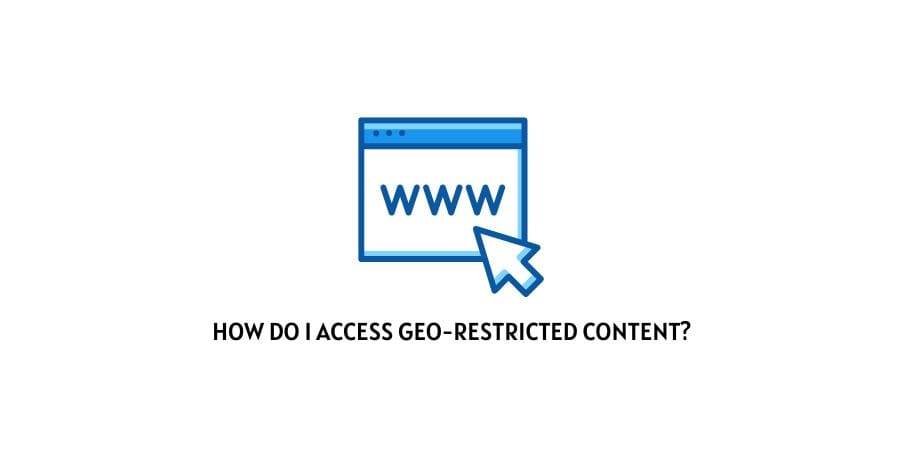
Geo-restriction or geo-blocking has been around for some time, and there is a high likelihood that you have experienced it at some point in life.
It can sometimes feel discriminatory. However, that is not to say that it cannot be circumvented. In fact, there are numerous tools you can use, and in this article, we discuss these tools. Specifically, we will explore how to use proxies to access geo-restricted content.
What is Geo-Restriction?
Geo-restriction is a practice that prevents online visitors from a particular country or countries from accessing products or services from a website based in a different nation. Usually, websites and their owners propagate this practice because of a number of reasons, including:
- Copyright and licensing restrictions
- Pricing tiers: geo-restriction enables companies to price their products based on location
- Illegal content: geo-blocking allows malicious sites to publish pirated content or sell counterfeit goods without worrying about getting caught
- Government directives, especially dictatorial regimes
- Relevance of a market: Some websites block access from certain markets if such markets are not relevant to their core business.
- Laws: Some sites will undertake geo-blocking in order not to be subject to the laws of that specific country.
How to Bypass Geo-Restriction?
There are three common ways of circumventing geo-blocking, namely:
1. Virtual Private Network (VPN)
A VPN creates a secure, encrypted tunnel between your computer and the service provider’s server (called an exit node) located in a different country.
This arrangement not only secures all internet traffic to and from your computer but also makes it appear as though you are browsing from the country where the exit node is domiciled.
In fact, the VPN will assign you the node’s IP address. However, VPNs are quite slow because they have to encrypt and decrypt the data.
2. Tor browser
Tor browser is an open-source web browser that lets you browse anonymously by providing access to the Tor network, which is maintained by the Tor Project.
It does this by providing multi-layered encryption, where your internet traffic is passed through at least three servers and is encrypted three times.
This way, the browser and the network hide your IP address, effectively masking your geographical location.
Moreover, the Tor browser lets you choose the location of the exit node by changing the configuration (config) settings.
This way, you can access otherwise geo-blocked content. Unfortunately, this option is quite slow due to its use of volunteer servers and the fact that the traffic must be encrypted.
3. Proxy Servers
Lastly and perhaps most importantly, you can use a proxy server to access geo-blocked content. Also known as a proxy, this solution acts as an intermediary between a web-based application or browser and the internet.
It routes traffic from and to your browser and, in the process, hides the IP address stored in the requests’ headers and, in its place, assigns a new IP. The assignment of the IP address is the foundation on which proxies base their ability to circumvent geo-blocking.
For instance, if you want to access content from a Thailand-based website that is disallowed to visitors from other countries. In that case, you would need to connect to a proxy Thailand. This tool will route all your traffic through an intermediary in Mexico, assigning your requests a Mexico IP address. As a result, your requests will appear to be originating from the location associated with the proxy’s Mexico IP.
Proxies vs. VPNs and Tor Browser
Proxies have a one up on both VPNs and the Tor browser, especially because they are fast – they do not encrypt or decrypt data packets. But this is sometimes disadvantageous, as it carries a security risk, especially when using shared proxies or an unreliable proxy service provider. For the best results, it is, therefore, advisable to pick a reliable provider.
But what do we mean by picking a reliable provider? Such a provider promises – and delivers – 24/7 customer support, near-100% uptime for the proxies and other related services, support for proxy integration with third-party applications, and a large number of IP addresses from tens of countries around the world. Given that most proxy types – all apart from reverse proxies – are intended to hide your real IP address, assigning a new unique one instead, the number of IP addresses is quite important. Equally crucial are the locations of these proxies, especially if you are to use them to access geo-restricted content from as many locations as possible.
A reliable provider should provide hundreds or thousands of IPs for a given proxy type to cater to users who prefer dedicated proxies to access geo-restricted content. Based on our example of Mexican content, the provider should not just offer one proxy in Mexico. Rather, there should be hundreds or thousands of such offerings.
Conclusion
You can use three main approaches to circumvent geo-restrictions: proxies, VPNs, and the Tor browser. Of these options, proxies are faster but less secure primarily because they do not support encryption. That said, you can use proxies to access geo-blocked content from tens of countries, provided the provider offers a large number of IPs from these nations.
Like This Post? Checkout More
